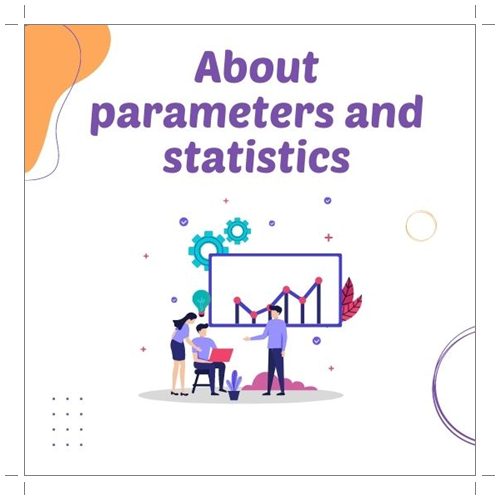
The inferential statistics area allows you to make informed hunches about the mathematical characteristics of large groups. Sampling logic provides you with a method of evaluating conclusions about such groups using only a tiny portion of their members.
When are populations used in research?
Populations are used when a research study query requires data from each member of the people. When the population is readily available and trim, this is often feasible.
What is the difference between a specification and a fact?
A statistic describes procedures on the sample, while a criterion refers to steps on the population.
How do you understand if a number is a yardstick or a statistic?
To identify whether a given number is a fact or a criterion, ask yourself the following:
Does the number explain a total and complete population where data collection from all members can be capture?
Is it possible to accumulate information for this number of each population participant in an affordable time frame?
If the solution is proper to both questions, the number is likely to be a specification. For small populations, the information can be accumulate from the entire population and summarized in specifications.
If the answer is no to any of the questions, the number is more likely to be a fact.
Read more : How to fix Discord PSTN connection problem (Discord No Route Error
Statistics vs Parameter
1. Media
The term “suggest” is commonly known as the mean, as it is the most widely used of the three leading trend indicators. Scientists use measurement to analyze the distribution of information from ratios and intervals.
The average is calculated, including and separating the cause of the order of the score. As an example, in 5 families, which include 5, 2, 1, 3, as well as two children, the mean could be calculated using the following formula:
= (5 +2 +1 +3 +2)/ 5.
= 13/5.
= 2.6.
2. Median
The type can be use to calculate variables determined by ordinal or interval scales. It is determine by arranging the data from most significant to most minor and then choosing the numbers that are in the middle. If the total number of points is odd, the mean is usually a higher mean value. When the data factors are the same, The average can be calculated by adding two numbers in the middle and dividing them by 2 to get the standard.
The average is typically use in circumstances where several variables differ. In the previous case, when calculating the standard of the students who enter the university, some students could be older than others. Using the mean can skew the numbers because it can indicate that the typical age of the student is older than the median while using the average will undoubtedly give a much more accurate representation of the fact.
Suppose we want to find out the average age of students entering their first school with the following numbers of 10 students:
17, 17, 18, 19, 19, 20, 21, 25, 28, 32.
The median value of the figures in the table above is (19 +20)/ 2 = 19.5.
Adjustment
This configuration has the highest number of frequent events in information distribution. It shows which value or number is most prevalent within the information distribution. The technique relates to any data.
As an example, let’s look at the situation of a college course with approximately 40 students. Students take the test, graded and then divided into teams of 1 to 5, starting with the lowest points.
Conclusion
In this article, we take a look at the population of interest and several other relevant insights that impact the success of any investigation. More than just identifying the right target population, you need to know how to choose a sample with variables relevant to your research. Done right, tasting decreases the chances of errors in the final results.
Leave a Reply